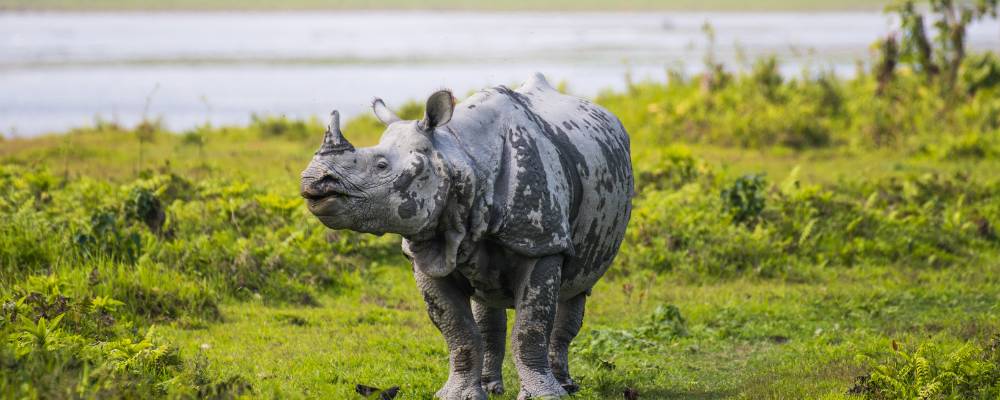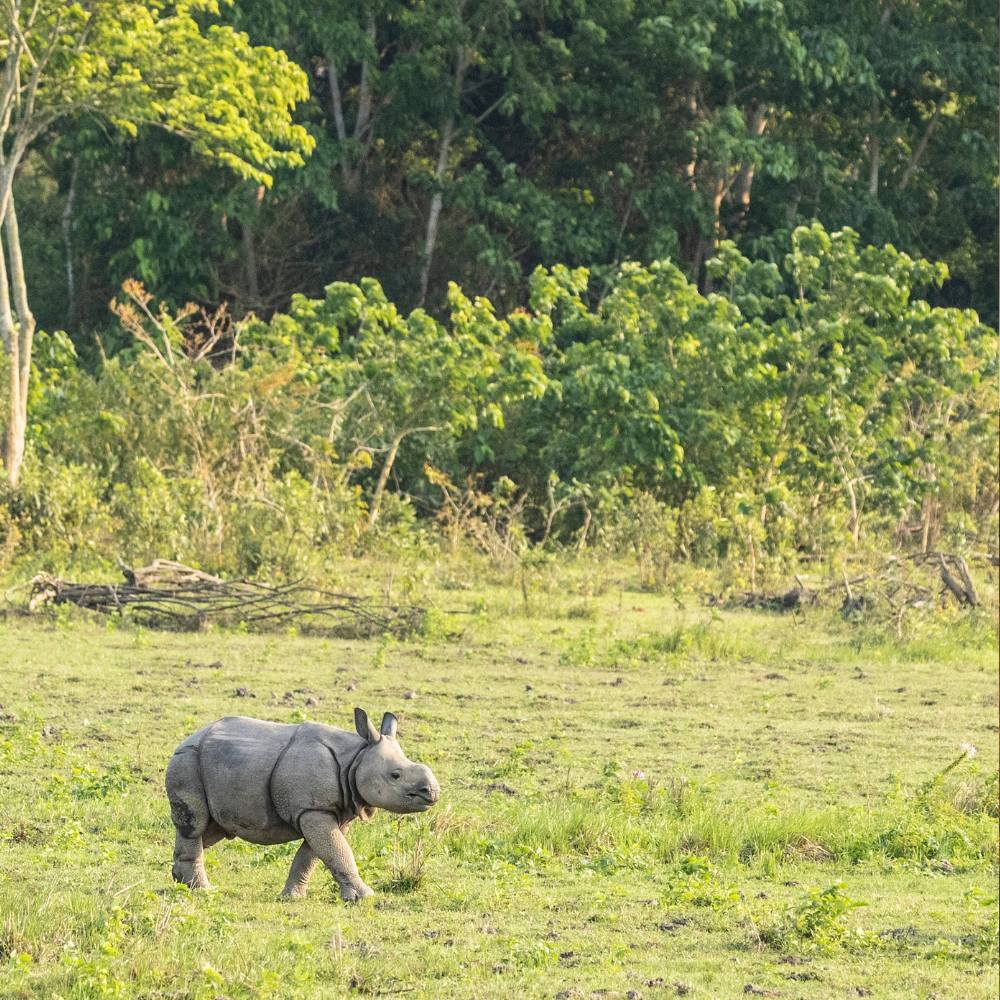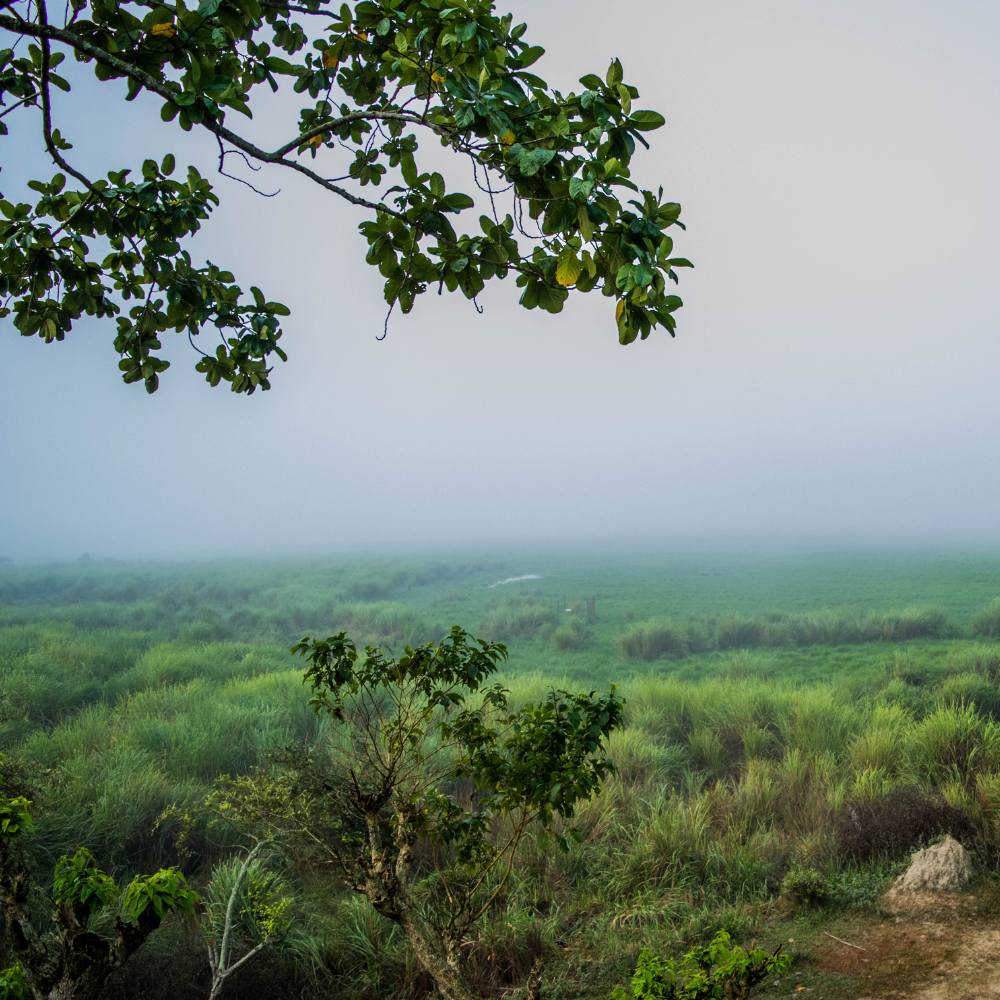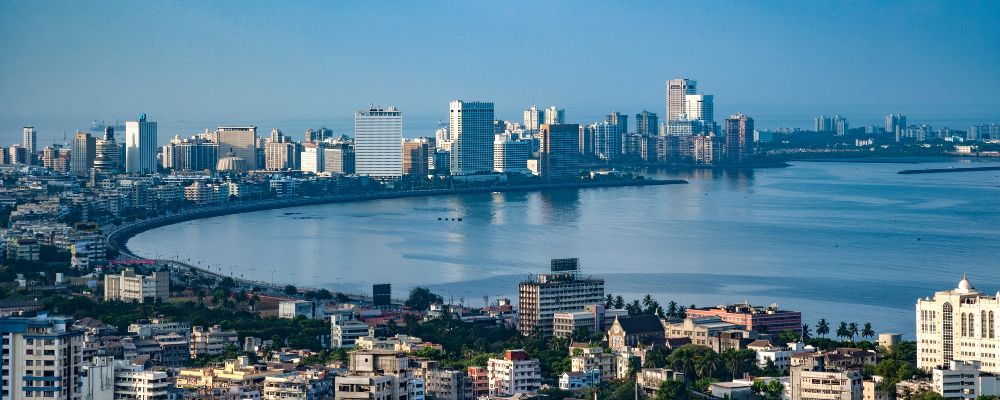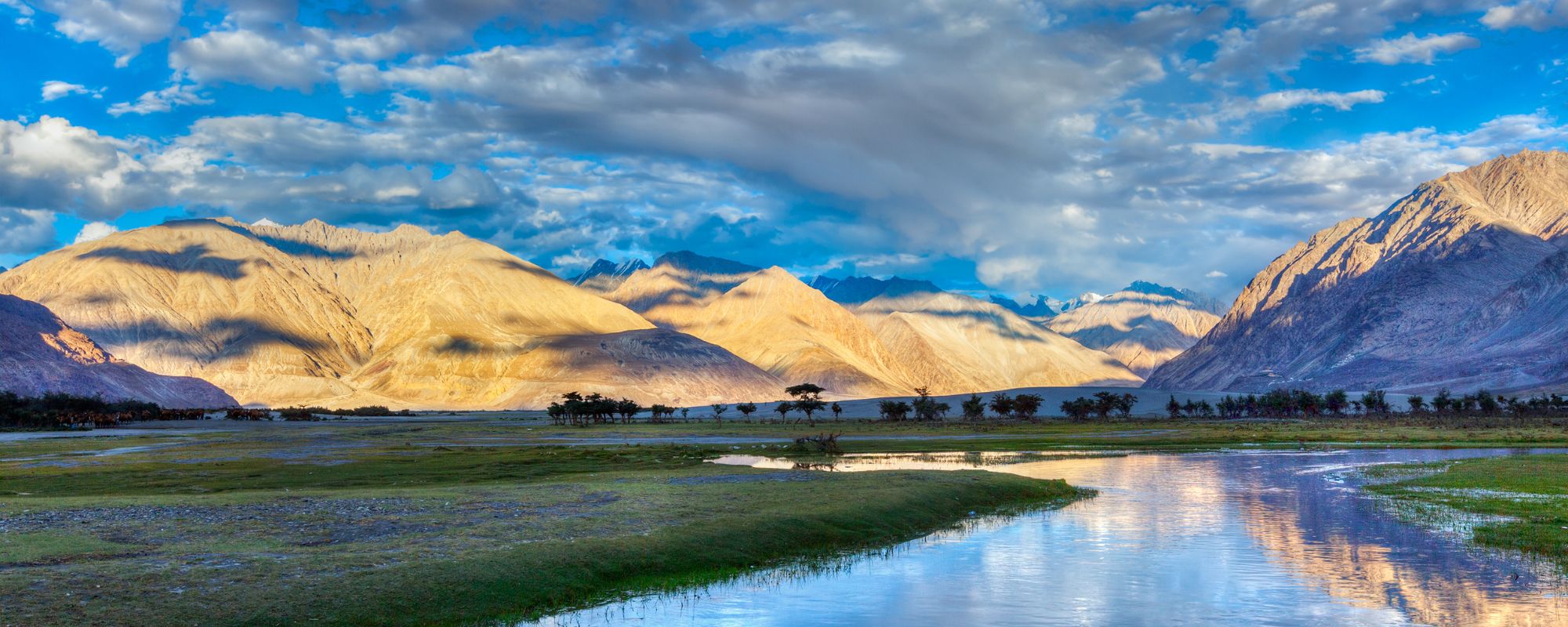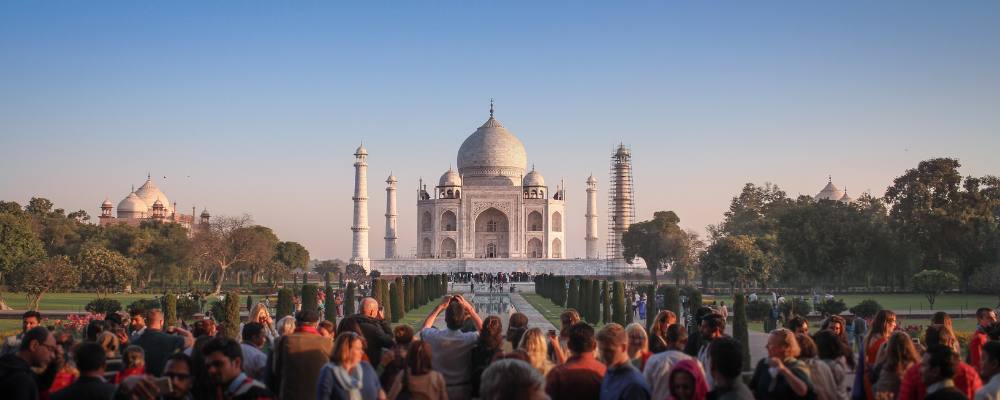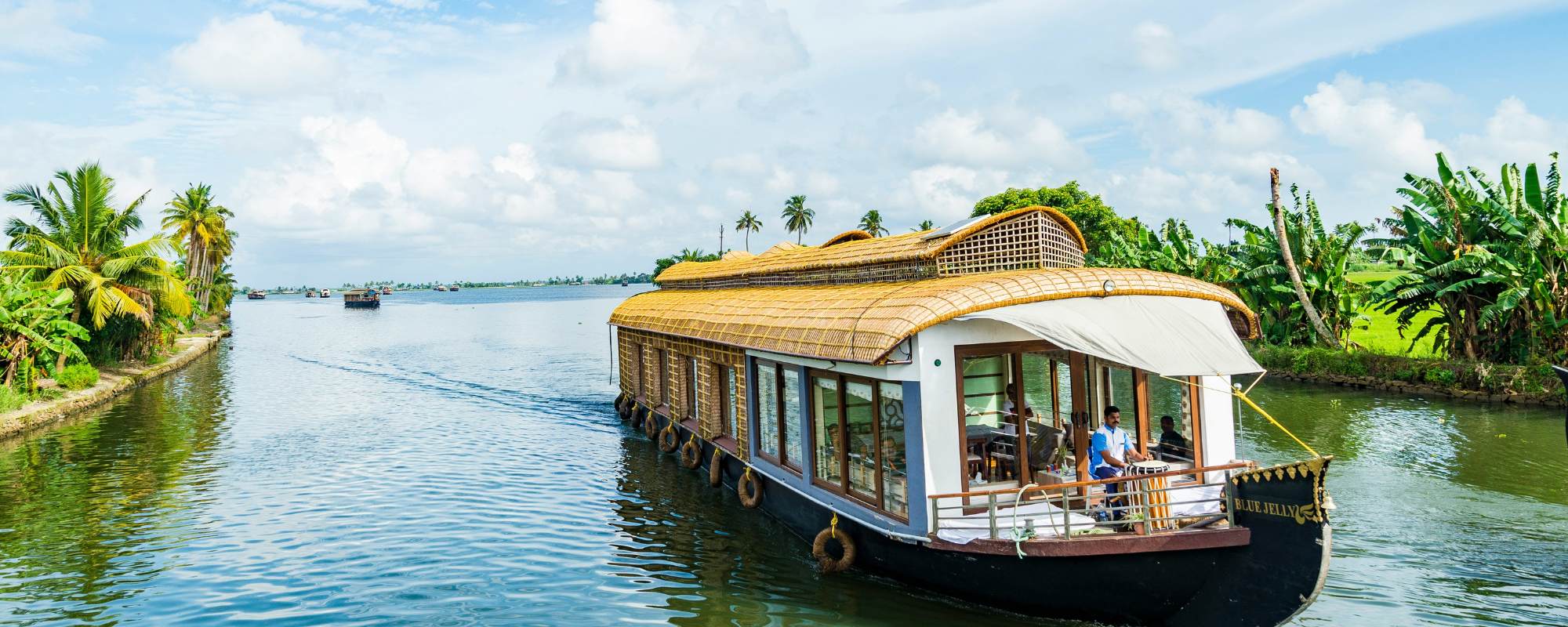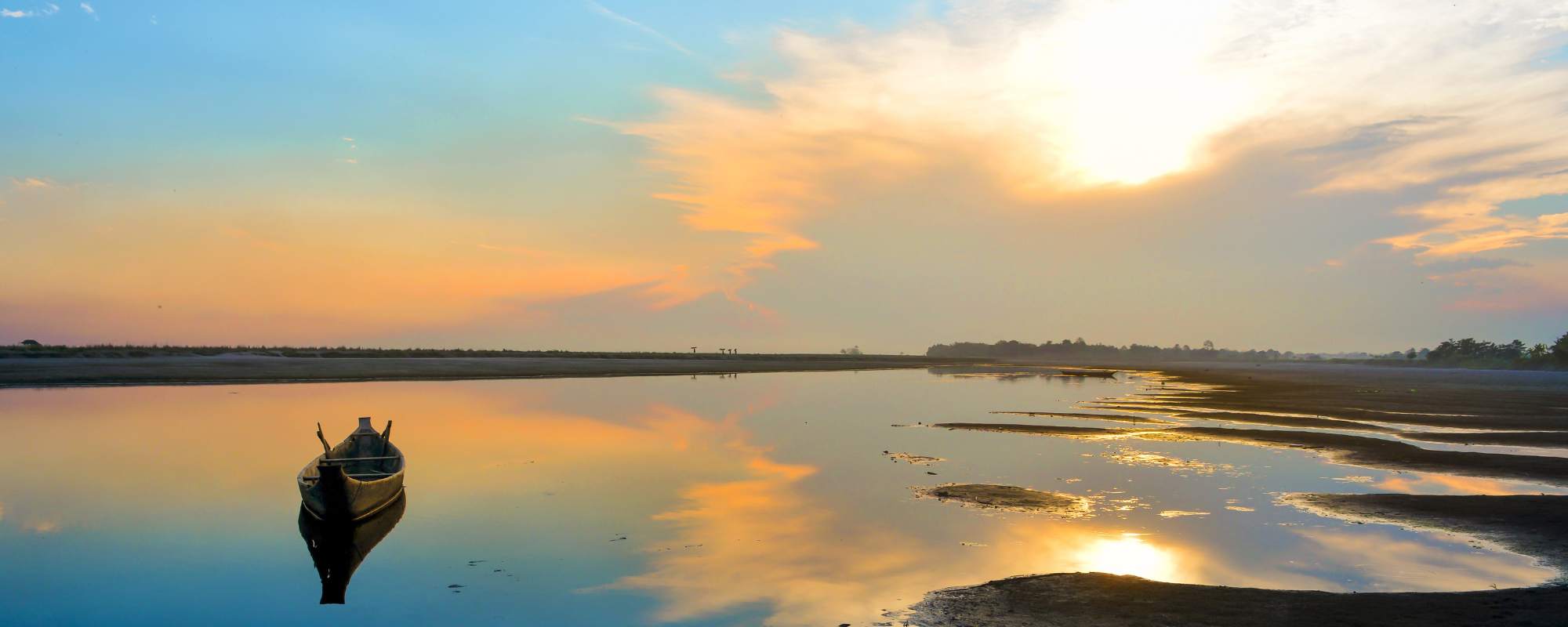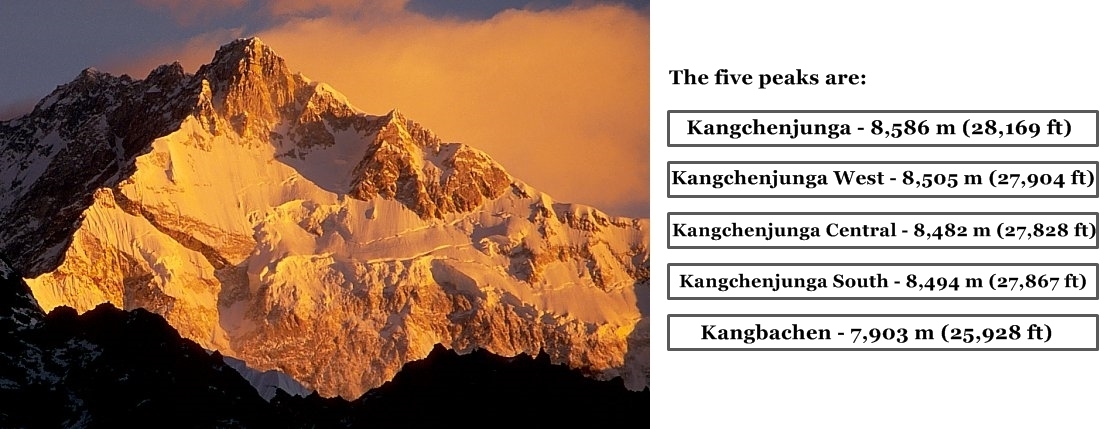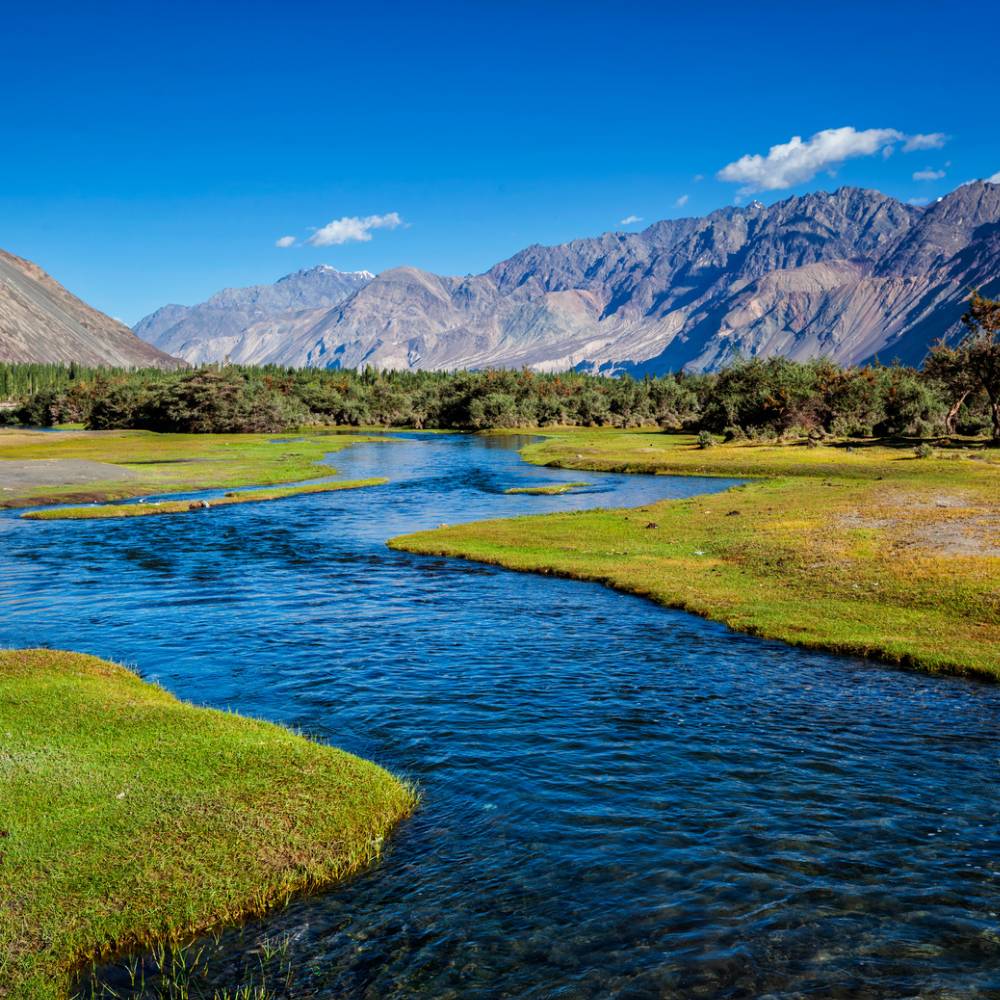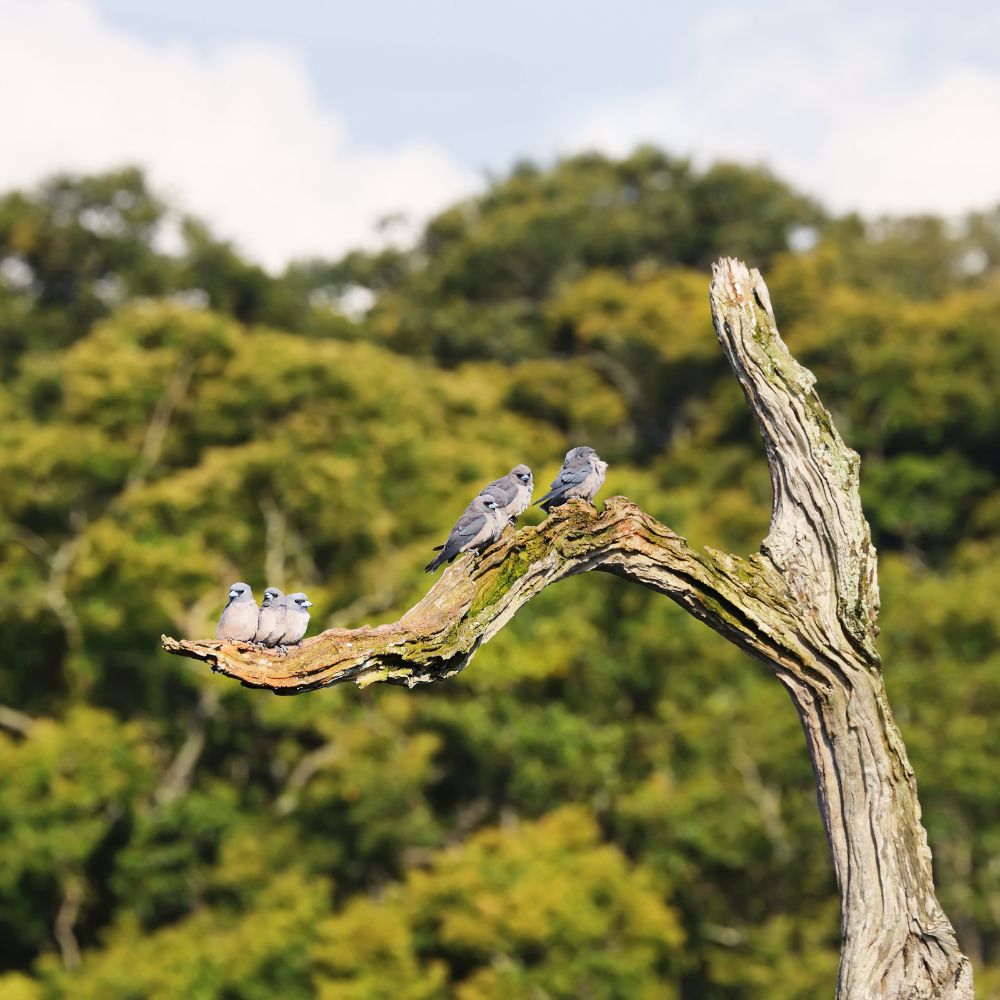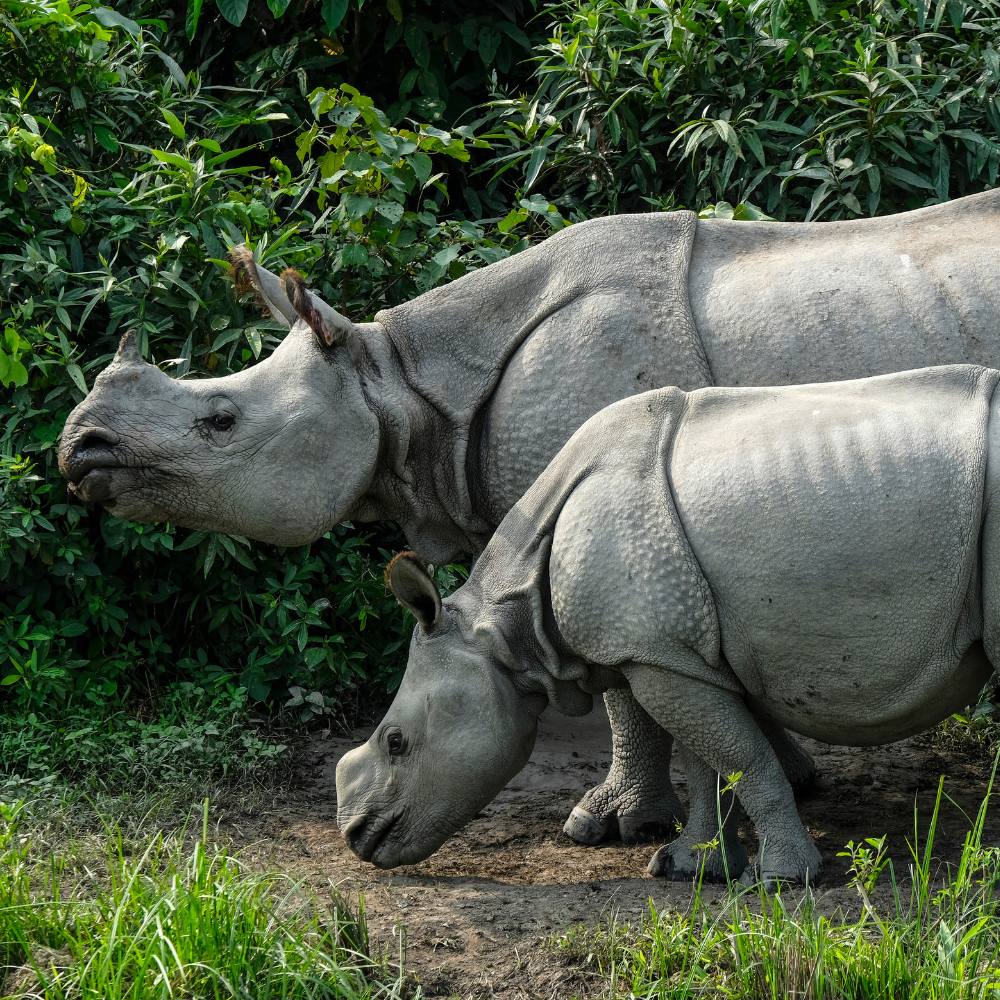Nestled in the northeastern state of Assam, Kaziranga National Park is a sanctuary of sublime wilderness. Spanning 430 square kilometers, it is renowned for its vast expanse of tall elephant grass, marshlands, and dense tropical forests. Recognized as a UNESCO World Heritage Site, Kaziranga is synonymous with conserving the Great Indian One-Horned Rhinoceros, boasting the highest population of this majestic creature.
Located in the Golaghat and Nagaon districts of the state of Assam, Kaziranga National Park hosts two-thirds of the world’s great one-horned rhinoceroses. Kaziranga is home to the highest density of tigers among protected areas in the world. The park is also recognized as an Important Bird Area by BirdLife International for the conservation of avifaunal species.
Historical Significance of Kaziranga National Park
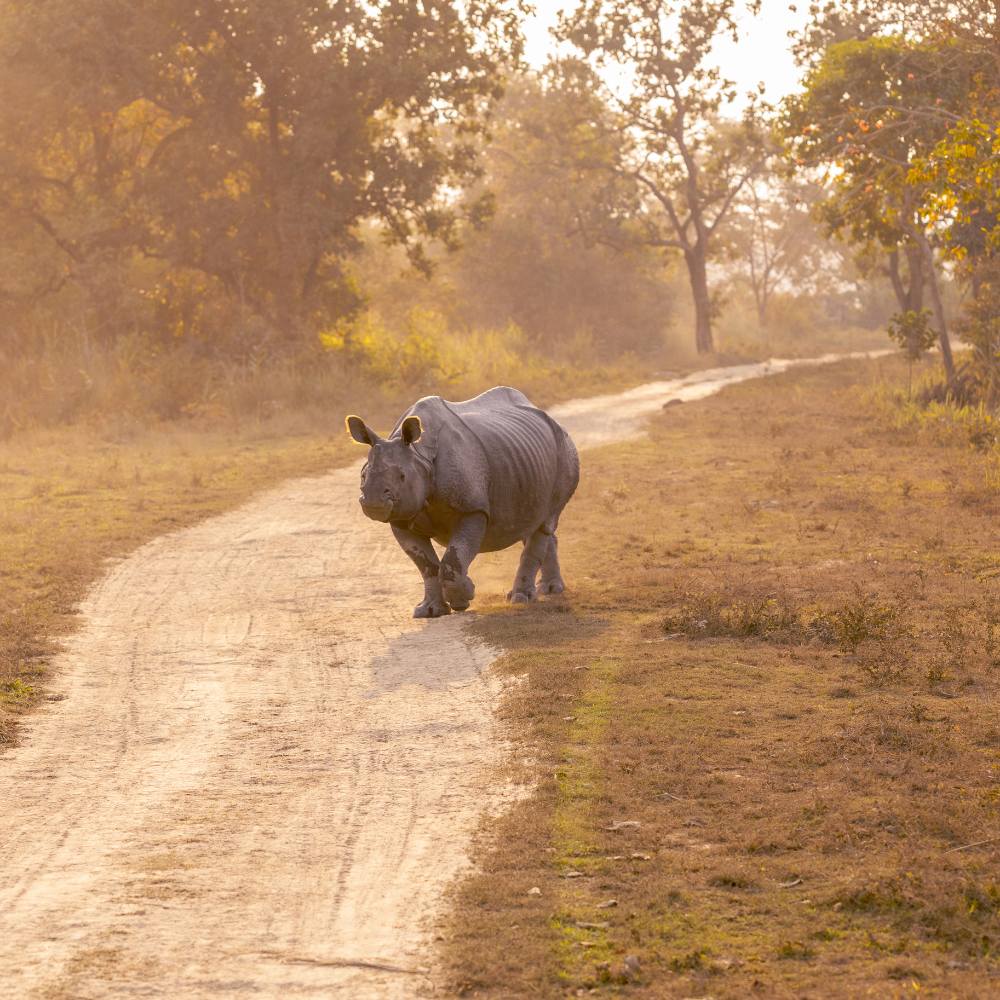
Kaziranga's journey from a hunting ground to a protected area is a tale of visionary conservation. In 1904, Mary Curzon, wife of the Viceroy of India, Lord Curzon, spearheaded the movement to protect this natural haven. Her efforts culminated in establishing Kaziranga as a reserved forest in 1908. Over the decades, it evolved into a national park, with its rich history intricately woven with the preservation ethos.
Geography and Landscape

Situated in the heart of Assam, Kaziranga is flanked by the mighty Brahmaputra River to the north and the Karbi Anglong hills to the south. The park is accessible by road, rail, and air, with the nearest airport in Jorhat approximately 97 kilometers away.
Kaziranga's topography is a symphony of varied landscapes. The alluvial grasslands, punctuated by scattered tree groves and swamps, create a mosaic of habitats. This diversity supports an incredible array of wildlife, making it a haven for naturalists and adventurers.
The park is crisscrossed by numerous rivers and streams, with the Brahmaputra being the lifeline. These water bodies sustain the flora and fauna and sculpt the dynamic landscape of Kaziranga, contributing to its ecological richness.
Flora and Fauna

Kaziranga's floral diversity is a tapestry of tropical forests, grasslands, and wetlands. The park is home to many plant species, from the towering Bombax trees to the delicate orchids, creating a vibrant ecosystem.
Kaziranga's fauna is as diverse as its flora. The park harbors many species, from the formidable Bengal Tiger to the elusive Fishing Cat. Its biodiversity is a testament to the park's effective conservation strategies and natural abundance.
Kaziranga is the stronghold of the Great Indian One-Horned Rhinoceros. Intensive anti-poaching measures, habitat restoration, and community involvement have been pivotal in increasing the rhino population, making Kaziranga a global conservation success story. The one-horned rhinoceros thrives in Kaziranga's grasslands and swamps. These habitats provide ample grazing grounds and water sources, ensuring the sustenance of this iconic species.
Kaziranga is a paradise for birdwatchers, with over 500 species recorded. The park is a crucial stopover for migratory birds such as the Bar-headed Goose and the Ferruginous Duck, making it a vibrant avian hub. Resident birds, including the Great Hornbill and the Bengal Florican, add to the park's avian diversity. These species contribute to the ecological balance and the park's enchanting soundscape.
Other Mammals of Kaziranga National Park

The park is a sanctuary for Asiatic Elephants, with large herds roaming freely. These gentle giants contribute to the ecological balance by aiding seed dispersal and maintaining the grassland ecosystem.
Kaziranga is a critical habitat for the Bengal Tiger, one of the most endangered big cats. The park's dense forests and grasslands offer ideal conditions for these apex predators.
The endangered Wild Water Buffalo also finds refuge in Kaziranga. These powerful animals are crucial to the park's biodiversity, playing a key role in the ecosystem.
Park's Ecosystem
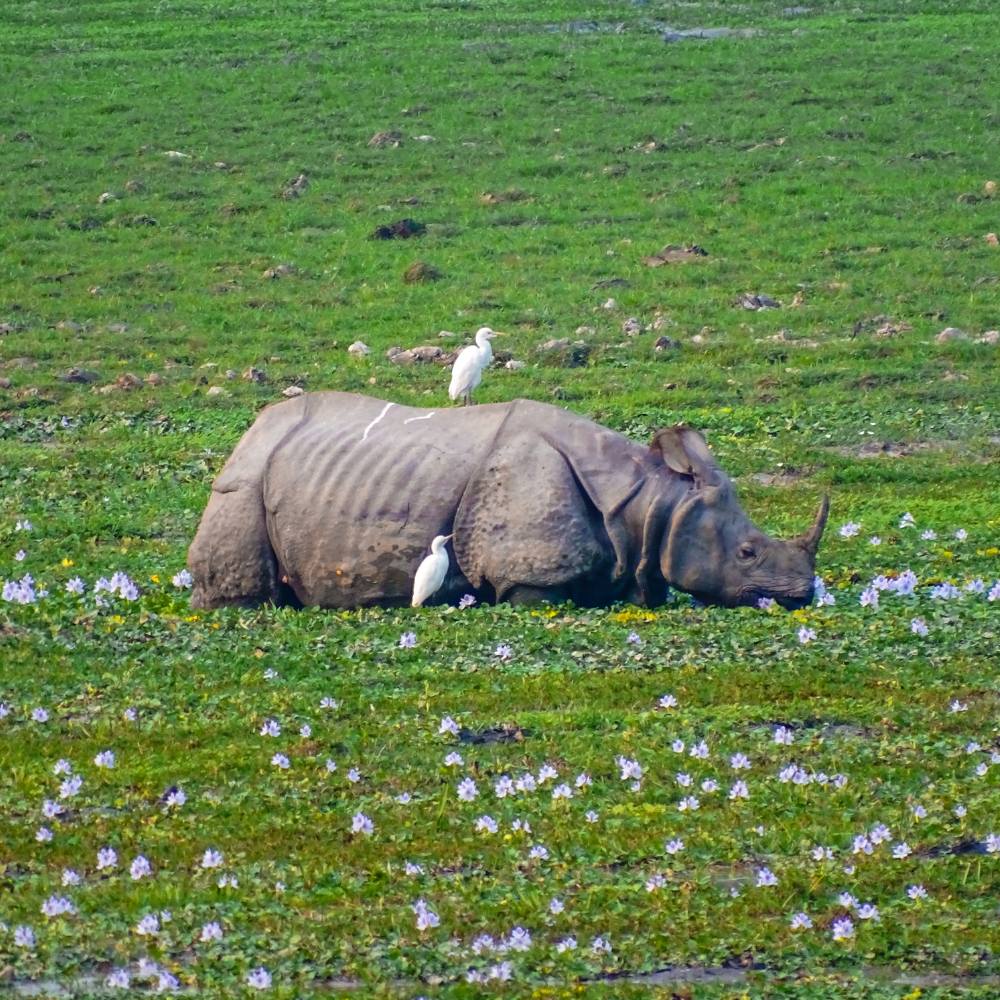
The wetlands of Kaziranga are crucial for maintaining the park's hydrological balance. They serve as breeding grounds for aquatic species and provide a habitat for numerous birds and mammals. These forests are characterized by broad-leaved deciduous trees and evergreen species. They give shelter to many wildlife, making them an integral part of Kaziranga's ecosystem.
Semi-evergreen forests, with their dense canopy and rich biodiversity, form a significant part of Kaziranga's landscape. These forests are home to numerous species, contributing to the park's ecological complexity. The grasslands of Kaziranga are dominated by tall elephant grass and serve as the primary habitat for the rhinoceros and other herbivores. These open areas are vital for the park's grazing animals.
Best Time to Visit Kaziranga
Winter, from November to February, is the best time to visit Kaziranga. The weather is pleasant, and wildlife sightings are frequent as animals bask in the sun.
The monsoon transforms Kaziranga into a lush green paradise from June to September. However, heavy rainfall can lead to flooding, making some areas inaccessible.
From March to May, summer sees temperatures rising, but it's also a great time for wildlife enthusiasts. Water sources dwindle, drawing animals to the remaining water bodies and increasing the chances of sightings.
Experiences
Jeep safaris are the most popular way to explore Kaziranga. The guided tours offer a chance to see the park's diverse wildlife up close, with experienced naturalists providing insightful commentary.
Boat rides along the Brahmaputra River offer a serene way to observe aquatic life and bird species. These excursions provide a tranquil contrast to the rugged jeep and elephant safaris.
Conservation Challenges
Poaching remains a significant threat to Kaziranga's wildlife. Despite stringent measures, the high value of rhino horns and other animal parts drives illegal activities. Habitat fragmentation due to human encroachment and developmental activities threatens the park's biodiversity. Efforts are ongoing to mitigate these impacts and preserve the integrity of Kaziranga.
The indigenous tribes of Assam play a crucial role in Kaziranga's conservation. Their traditional knowledge and sustainable practices are integral to the park's ecosystem management. Ecotourism initiatives in Kaziranga aim to balance conservation with economic benefits for local communities. Responsible tourism practices help preserve the park's natural beauty while supporting livelihoods.
Eco-Friendly Lodging Options

Kaziranga offers a range of eco-friendly lodging options. Sustainable resorts minimize environmental impact through green practices, providing. Homestays in Kaziranga also offer an immersive experience, allowing visitors to connect with local culture. Staying with local families provides insights into their way of life and supports community-based tourism.
Cultural Heritage
Kaziranga is home to various indigenous tribes with unique cultures and traditions. Their rich heritage adds a cultural dimension to the park's natural splendor. Local festivals, such as Bihu, celebrate the region's cultural vibrancy. These events show the Assamese people's traditional music, dance, and customs.
Adventure Activities
Trekking: Trekking trails in and around Kaziranga offer an adventurous way to explore its diverse landscapes. These trails range from easy walks to challenging hikes, catering to all levels of adventurers.
Bird Watching: Kaziranga's rich avian life makes it a paradise for bird watchers. Guided bird-watching tours allow spotting rare and exotic species, enhancing the park's allure.
Nearby Attractions
Majuli Island: Majuli, the world's largest river island, lies close to Kaziranga. It is a cultural hotspot known for its vibrant traditions, satras (monasteries), and scenic beauty.
Nameri National Park: Nameri National Park, located nearby, is another gem of Assam. It offers a different yet equally enriching wildlife experience, with river rafting and bird-watching opportunities.
Final Thoughts
Kaziranga National Park, a UNESCO World Heritage site in Assam, is a haven for wildlife enthusiasts. Famous for its population of the Indian one-horned rhinoceros, the park offers a spectacular opportunity to witness these majestic creatures in their natural habitat.
As we look to the future, the continued protection of Kaziranga is paramount. We can ensure this natural wonder thrives for years by fostering a harmonious relationship between nature and humanity.
As a luxury travel agency in India, through our wildlife tours, you can experience exclusive safaris through Kaziranga's lush landscapes, where you can also spot tigers, elephants, and diverse bird species. Experience the thrill of guided jeep and elephant safaris, coupled with luxurious accommodations and personalized services, ensuring an unforgettable adventure in one of India's most celebrated wildlife sanctuaries.
